I finished the Magna Models 1/48 Firebrand. Some immediate thoughts:
- It’s not the worst model kit I’ve ever built. That honor still belongs to a couple of Special Hobby kits.
- This model is (obviously) buildable. But I can’t say it’s worth it unless you just really, really, really want a Firebrand.
- I did learn a lot from this build, chief of which was the outer limits of my abilities.
- I expect Trumpeter or HobbyBoss to announce they’ll be releasing this kit any day, now that I’ve finished this one.
I’d started this build with some pretty high expectations of the outcome. Despite the rough, rough, rough look of the parts, I thought I had the experience and skill to really make this one shine.
Turns out I was wrong.
Now- it’s not bad, really. If you look at it from three or four feet away, it’s a reasonably nice looking model. But it’s on close examination that you’ll see the flaws. And I’ve always been driven to produce stuff that stands up to close examination. I don’t always succeed, but on this one, I feel like I fell flat on my face.
In my defense, I had to fight the kit the entire way. The resin was awful. It would flake off at a glance. Despite washing it and priming it with lacquer based primer, paint kept wanting to chip away from it. I am quite certain that Sprite or 7-Up was used in the production of the resin, as the number of bubbles that had to be dealt with could only be explained by the presence of such an effervescent beverage. The casting blocks showed a disdain for modeler’s rarely seen outside of Special Hobby’s walls.
Still, the shape was not bad, with reasonable surface detail. And once the GIANT casting blocks were removed, everything actually lined up rather well.
Those Flakes
The biggest problem I had to deal with was the aforementioned resin. Because the surface was so pitted with bubbles and pinholes, quite a bit of work was required to fill those in. Filling, priming, sanding, checking, filling, priming, sanding, checking, ad nauseam. And only late in the build did I discover that what I thought was restoring panel lines was actually causing a huge problem.
As I’d fill the various pinholes, and then sand it down, the panel lines needed rescribing. After doing that, I’d prime again to check it. After priming, I noticed a small build up of primer in the panel lines, so I’d gently scrape it out with a needle in a pin vise. Only late in the process did I discover that the the edges of the panel lines were flaking, at which point the application of the primer seemed to loosen them further.
Priming and clearing them out only made the problem worse. Towards the end, I tried to fill them in with various fillers and rescribed, but most fillers don’t take well to scribing, and when I tried scribing in “virgin” resin off one side or the other of a panel line, the flaking got even worse. Even switching to an acrylic primer didn’t stop the process. It appeared that the mere act of looking at the model made the resin flake off.
The lesson I took away from it was that if, by some stretch of the imagination I ever build one of these again, I’ll completely fill in ALL panel lines, and after painting, draw them in to the paint itself.
And That Canopy
I’ve never been a fan of vacform canopies, but I’ve learned to make use of them. However, this kit’s canopies were awful. Only one of the two provided had even the fainest lines visible to show framing, and then only partially. The shape of the canopy, and the contours of the model, were in no way in agreement either. Once the forward windscreen was cut and sanded into the general shape, no effort to get it to fit with precision seemed to work out. Eventually I had to settle for “good enough” and glue it on. For the sliding portion of the canopy, I simply used a spare from an Eduard Spitfire Mk. XVIe bubble top.
The landing gear, gear doors, tailhook, prop blades, and various other parts were “white metal”, which is a cover for the fact that it’s really just soft pewter, essentially. I recreated some parts with various sheet plastic and rod. But I’m just assuming that before too long, those spindly metal legs will begin to buckle under the sheer weight of all that resin.
In the end, finishing the model was less dictated by having all the parts and paint and decals on, and more by realizing that at some point I simply had to stop trying to correct all the problems and just accept it as is.
And the fact that I was bouncing along the outer limits of my abilities.
At the end of the day, it does look like the brutish Firebrand.
Just don’t get to close. I hear warts are contagious…. or so a toad told me so.
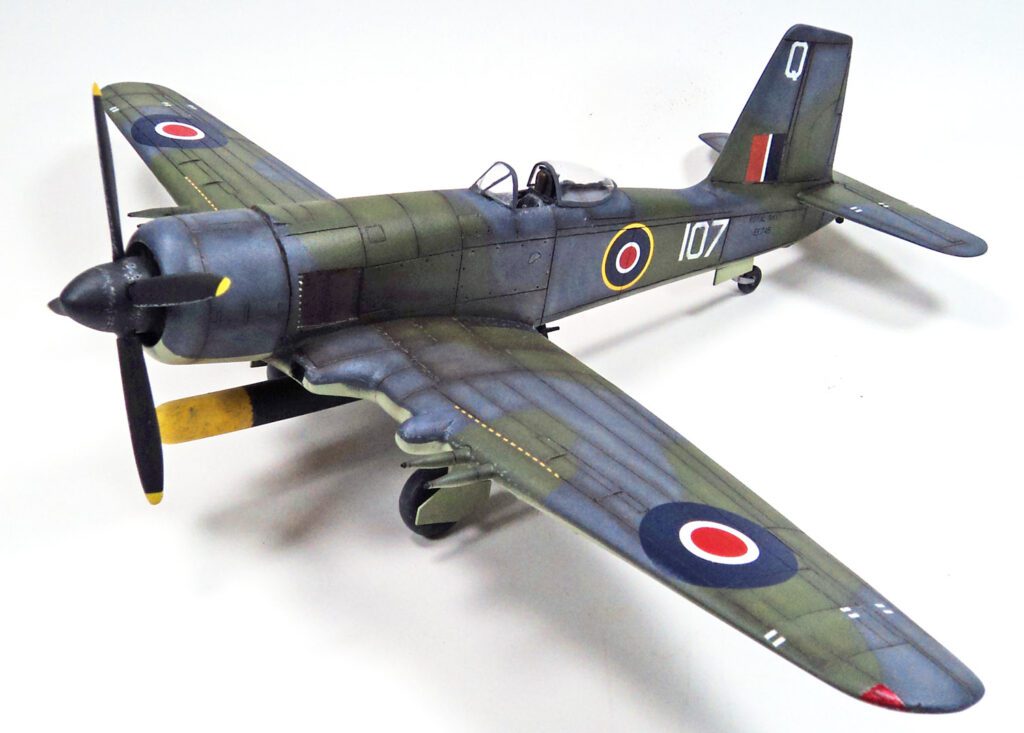
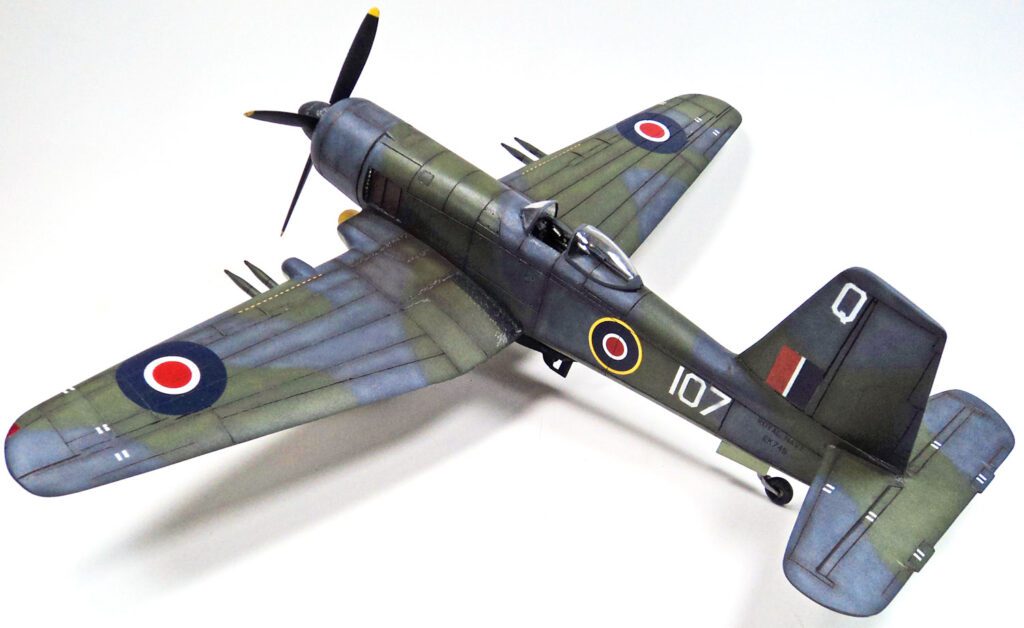
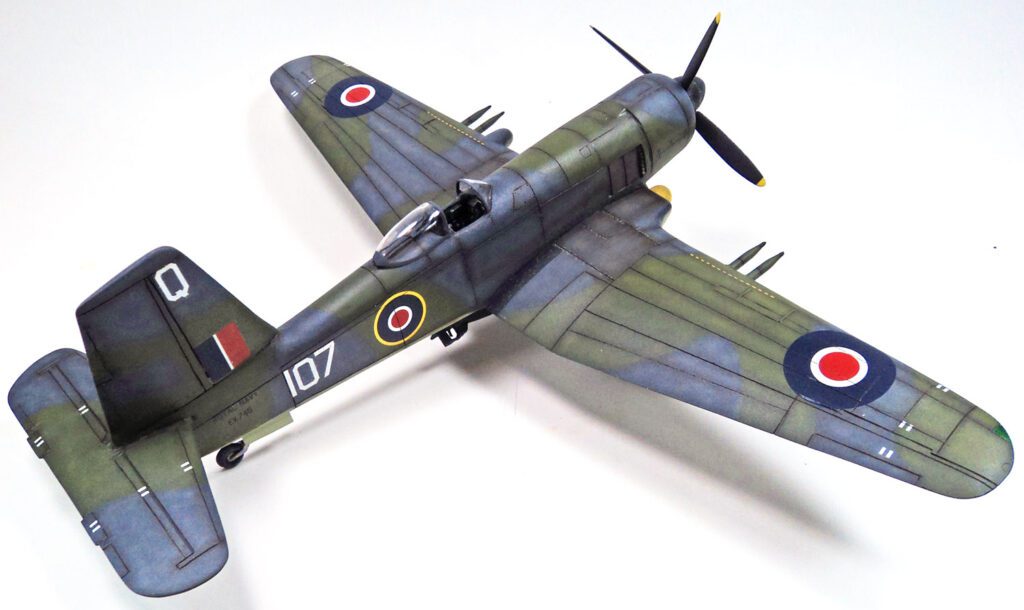
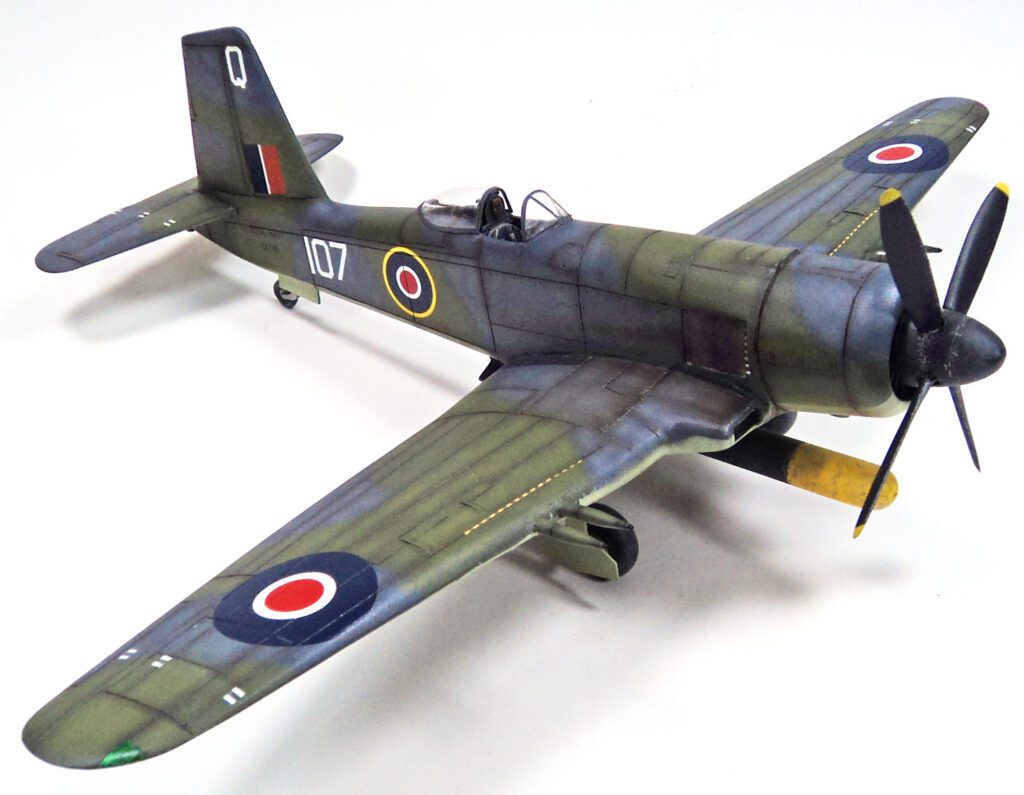

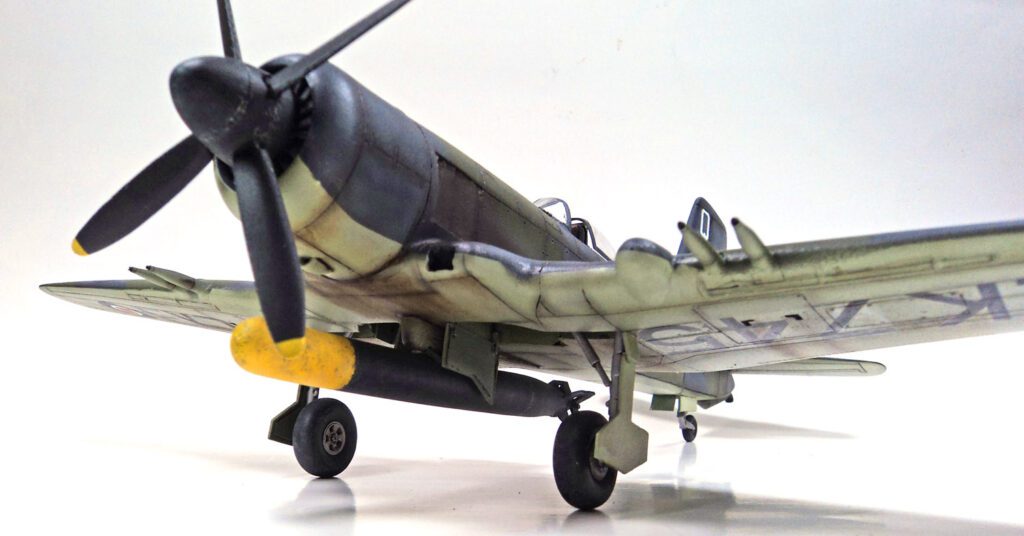
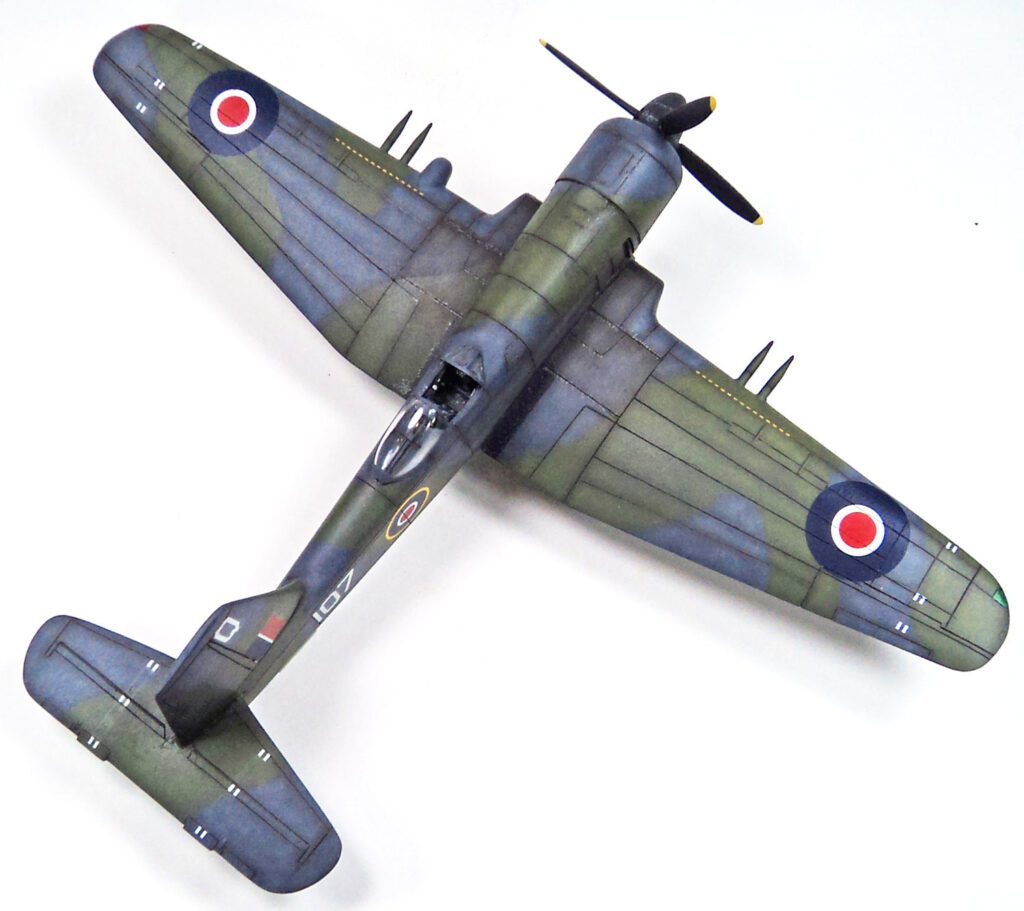


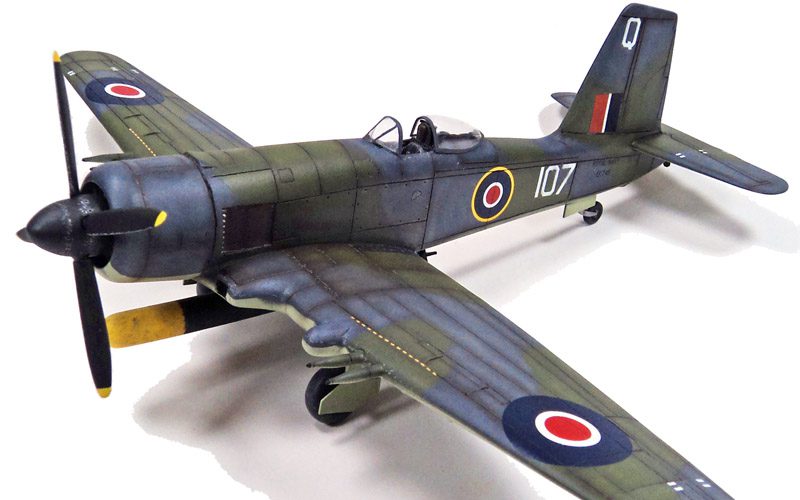
Leave a Reply